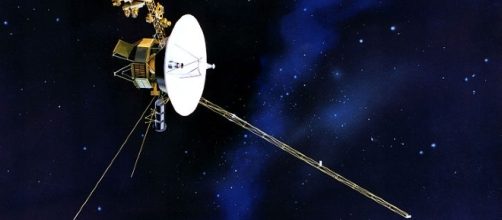NASA’s Voyager-2 mission celebrates 40 Years of space exploration this month. The ground breaking mission, now 11 billion miles away from planet Earth, continues to explore the vastness of space outside planet Earth.
The Voyager impact
The journey of the Voyagers is the journey of man. The story of these crafts made a huge impact to several generations of current and future scientists. The journey has also touched the culture of Earth including its music, film, arts, and culture.
The Voyager 2 carries a special cargo. Inside the craft is a Golden Record of the life on Earth.
The circular time capsule fitted in inside the space ship carries Earth’s music, including messages and pictures of its people. And since the Voyager is expected to last for billions of years more, time may come that this record will become the final trace, the only proof that once, the civilization of human existed on the face of the Earth. Times of India reports that the Voyager 1, the twin ship of Voyager 2, also carries a similar record.
Thomas Zurbuchen, the associate administrator for NASA’s Science Mission Directorate (SMD) at NASA Headquarters believe that the achievements of the Voyager mission are hard to match. The four decades journey has enlightened the human race and opened opportunities to explore the wonders of the infinite universe.
The Voyagers have also served as the beacon of hope, the inspiration for men to continue to explore the space beyond Earth.
The Voyagers and their achievements in the past four decades
The twin space crafts were both launched into space in 1977. Voyager 2 was launched on August 20 while its twin spacecraft, the Voyager 1, left for space on September 5. Ever since their take-off, the Voyager crafts have set significant records that are considered milestones in the history of space exploration.
The Voyager 1 is the only craft that successfully entered the interstellar space. Its twin, Voyager 2, is the only space vehicle that was able to reach the four outer planets of the Solar System which include Jupiter, Neptune, Saturn, and Uranus.
The planetary encounters of the Voyagers have revealed the presence of an active volcano on the surface of Io, Jupiter’s moon. The twin crafts have also discovered clues that hinted a subsurface ocean on Europa, another moon orbiting Jupiter. Their trip to Saturn also revealed that Titan, one of Saturn’s moons have an atmosphere that is similar to that of planet Earth. The Voyagers have also led us to discover Uranus’ icy moon Miranda and the geysers that lie on the surface of Triton, a moon of Neptune.


